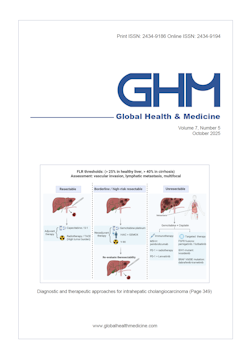Global Health & Medicine 2022;4(1):45-51.
Preprocedural frailty is strongly associated with symptoms after balloon pulmonary angioplasty
Ikeda N, Iijima R, Hara H, Hiroi Y, Nakamura M
Balloon pulmonary angioplasty (BPA) has improved the survival rate of patients with chronic thromboembolic pulmonary hypertension (CTEPH). The resolution of symptoms is one of the remaining goals of BPA. Frailty affects the outcome of cardiovascular diseases or treatments. The aim of this study is to assess the association between frailty and outcome of BPA. The resolution of symptoms is evaluated by the post-BPA World Health Organization functional class (WHO-FC). A total of 54 patients with CTEPH were divided into 2 groups by post-BPA WHO-FC (WHO-FC I group; n = 34 vs. WHO-FC ≥ II group; n = 20). Frailty was assessed by physicians using the clinical frailty scale (CFS) at the point of patient admission for their first BPA sessions. Compared to the WHO-FC ≥ II group, the WHO-FC I group was younger (65.6 ± 13.9 years vs. 74.3 ± 8.0 years) and had a lower CFS (3 [3, 4] vs. 4 [4, 6]) (median [25th, 75th percentiles]). The WHO-FC I achievement rates for each CFS score were CFS 3: 82.8%; 4: 53.8%; 5: 25.0%; 6: 33.3%; and 7: 20.0%. Logistic regression analysis showed that CFS was an independent predictor of WHO-FC I achievement (odds ratio 0.50, p = 0.012), but pre-BPA hemodynamic parameters and age were not independent predictors. Whether WHO-FC I can be achieved is predicted by pre-BPA patient frailty but not by pre-BPA hemodynamic parameters and age.
DOI: 10.35772/ghm.2021.01019







